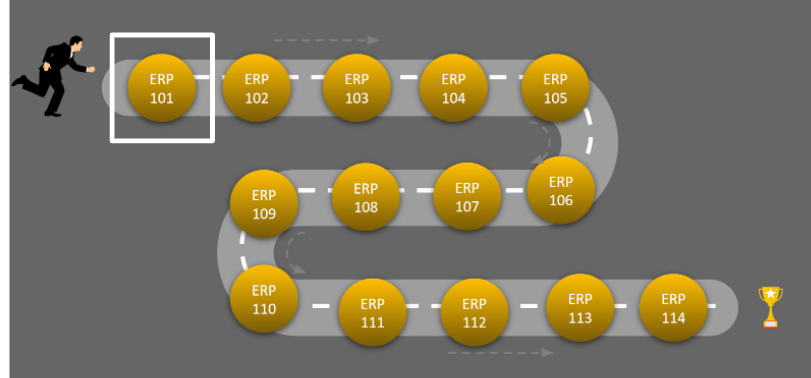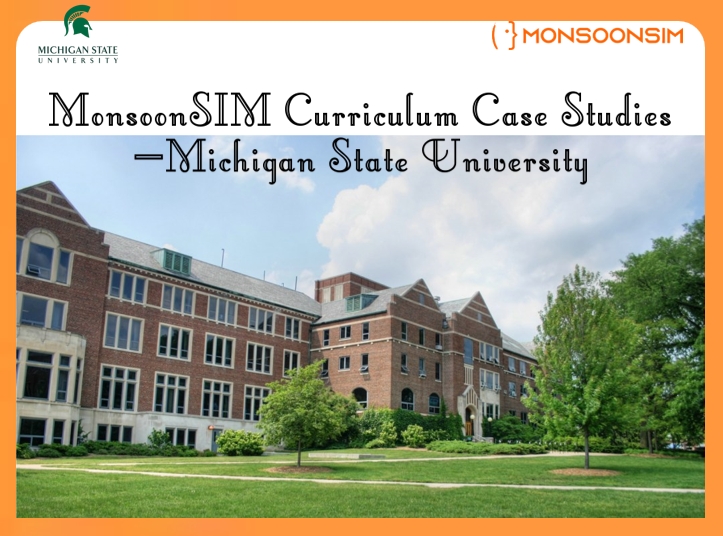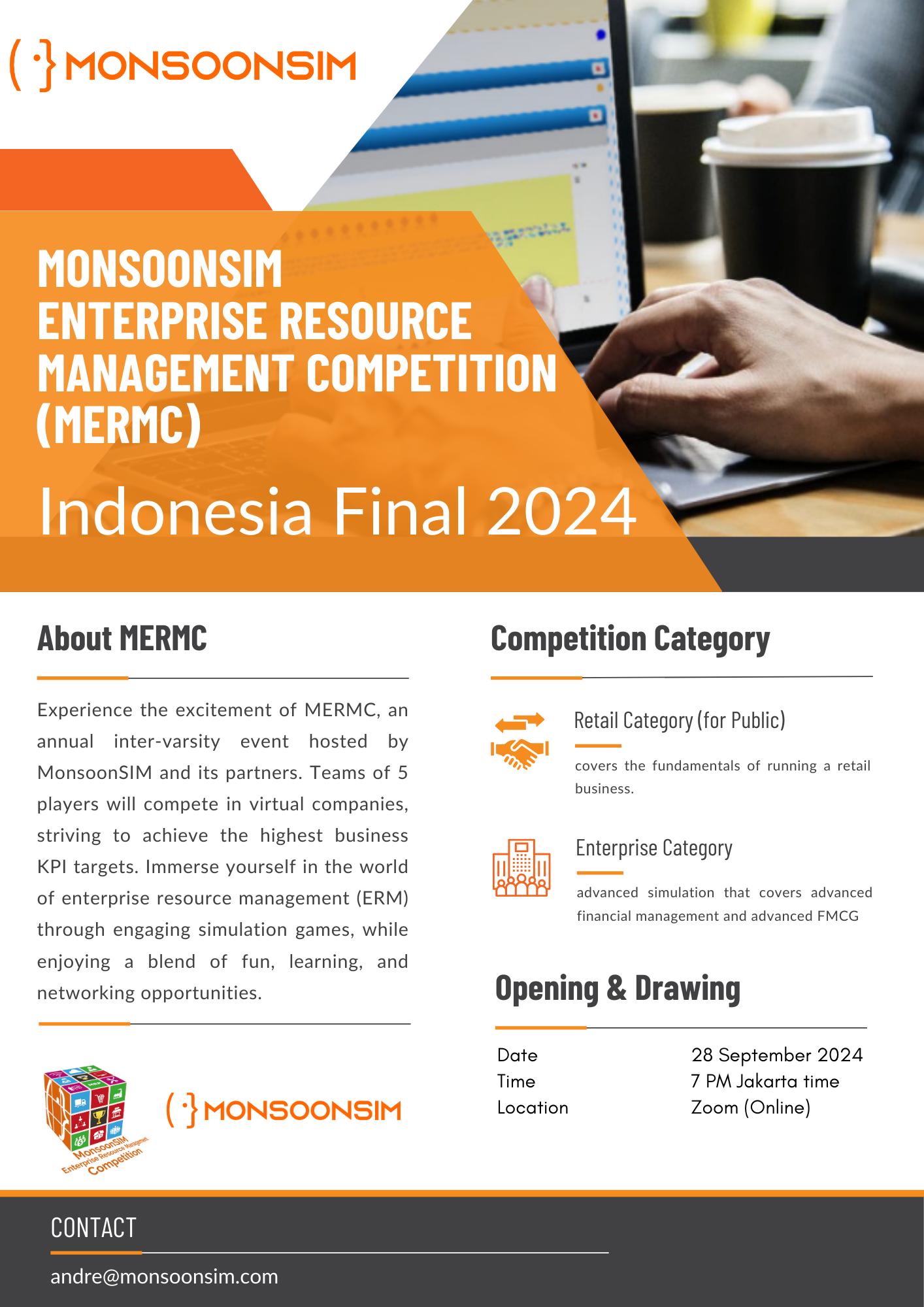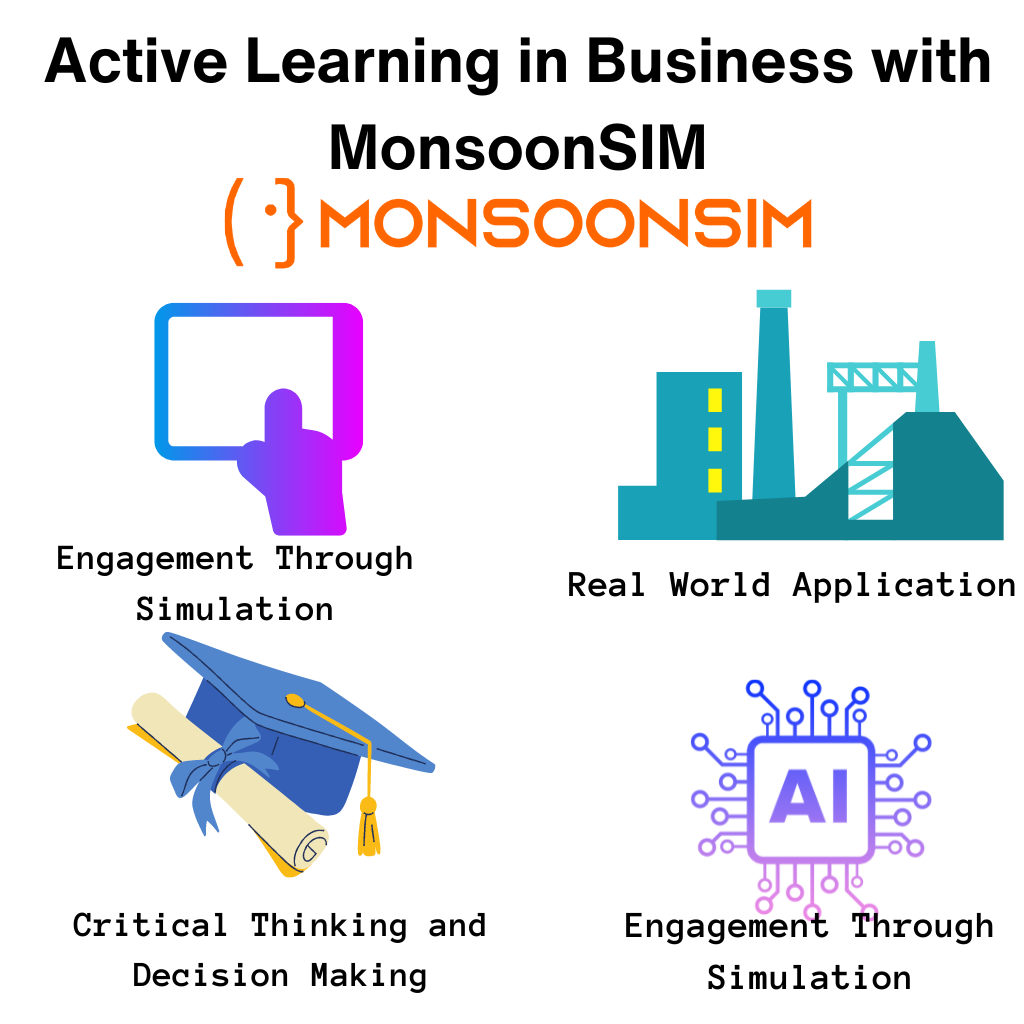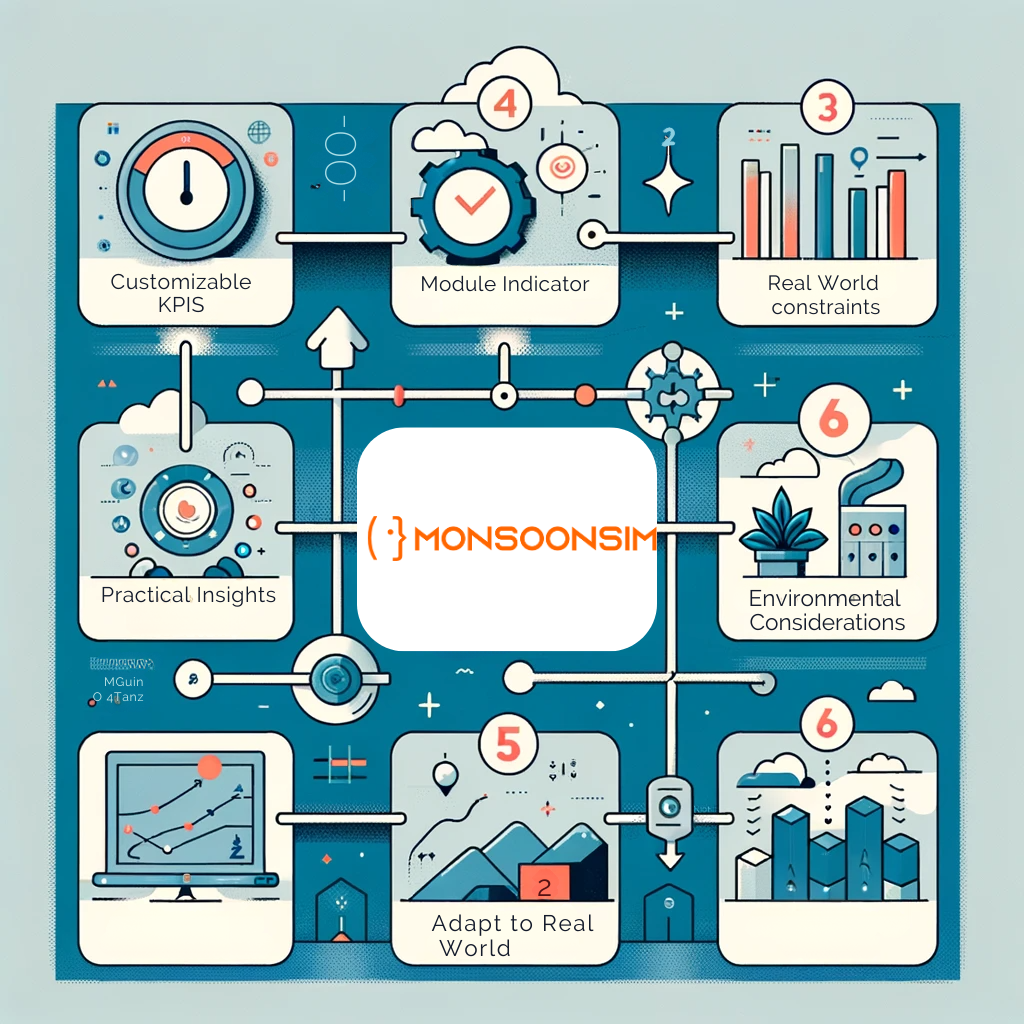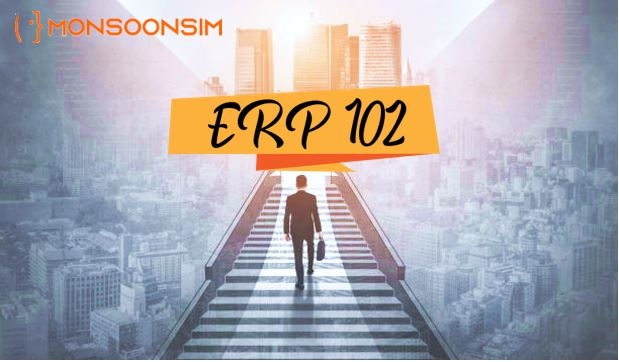
âIf opportunity doesnât knock, build a door.â âMilton Berle.
MonsoonSIMâs cloud-based ERP simulation and experiential learning software platform comprehensively gather business concepts and theories spanning over thirteen interconnected business departments into one convenient platform.
With more to teach and easier to teach as some of MonsoonSIMâs core missions, this leads to the carefully and meticulously crafted MonsoonSIM curriculum roadmap. This provides a visual reference of MonsoonSIMâs education standards and learning checkpoints, as well as the resources teachers use to meet those standards within the classroom. MonsoonSIM, in particular, has 14 micro-courses within the Enterprise Resource Planning curriculum roadmapâERP 101 to ERP 114.
To learn more about MonsoonSIM as a platform this video will sum it up.
The first module, ERP 101: Retail Business 1, has been outlined in a previous article, which can be found here, ERP 101.
ERP 102: Retail Business 2
About the Forecast Module
These next few paragraphs will specifically cover the learning points of ERP 202 (Retail Business 2). This second module involves the same business departments as in ERP 101 (Finance, Procurement, and Retail Sales), but now with the addition of Planning/Forecasting.
MonsoonSIM's ERP 102: A glimpse at the dynamic demand forecasting

In the ERP 102 course, MonsoonSIM introduces an essential department: Planning/Forecasting, in addition to Finance, Procurement, and Retail Sales. This module enables learners to delve deeper into demand planning and forecasting. By analyzing demand variations and vendor performance, learners sharpen their decision-making skills. They explore the effects of pricing on sales and assess volume discounts' impact, equipping them with practical knowledge to navigate complex business scenarios. Through hands-on experience in forecast analysis, ERP 102 facilitates a comprehensive understanding of demand planning, procurement strategies, and price strategies, ensuring successful and effective implementation in a simulated business environment.
| Modules | Focus | Description |
| Procurement | Supplier Evaluation | Assessing supplier performance and reliability. |
| Forecasting | Demand Prediction | Analyzing trends to predict future needs. |
| Sales | Pricing Strategies | Understanding the impact of pricing on sales volume. |
| Data Analysis | Market Trends | Utilizing analytics to interpret market data. |
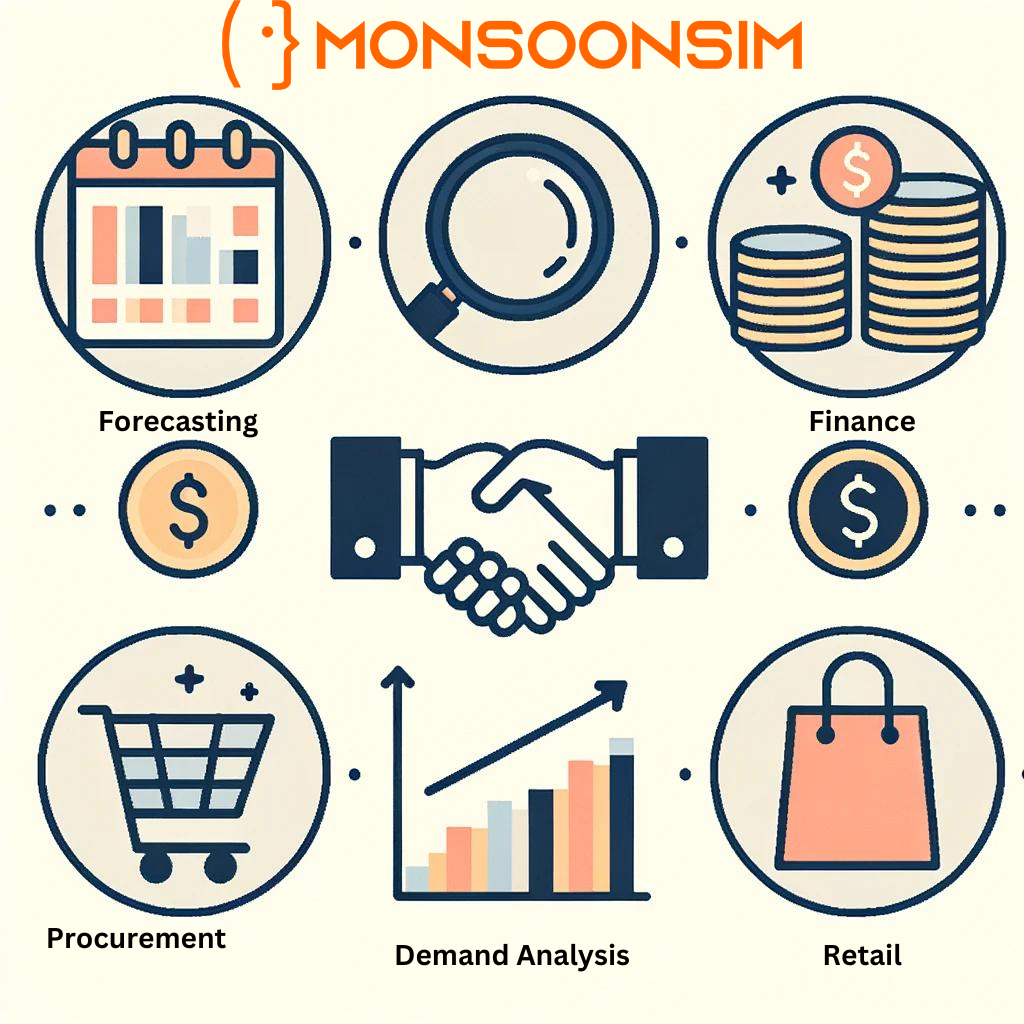 MonsoonSIM Forecasting
MonsoonSIM Forecasting
In this module, the main learning goals are :
1. Understand the process flow in procurement
2. Analyze and make demand forecasts
3. Deal with demand variations and strategies
4. Conduct vendor performance analysis
5. Cover the basics of retail sales
6. Conduct basic data analysis
Watch the Forecasting module in action
Essentially, the ERP 102 module provides the perfect chance to facilitate experiential learning for students when it comes to concepts such as demand planning, drawing up procurement strategies and price strategies, as well as ensuring its successful and effective implementation.
MonsoonSIMâs immersive business simulation and gamification education platform ensure that learners and teachers alike will have an enjoyable and meaningful learning experience as a class. Offering a unique, experiential learning opportunity for students and transforms the way business concepts are taught in class, MonsoonSIM looks forward to supporting more students worldwide in a way where thereâs more to learn, easier to learn.
For a deeper dive into efficient inventory management and the nuanced strategies within MonsoonSIM's ERP courses, explore the progression from "Mastering Demand Planning in MonsoonSIM's ERP 102 Course" to the advanced concepts covered in "ERP 103 - A Path to Entrepreneurial Success: Inventory Management ".



